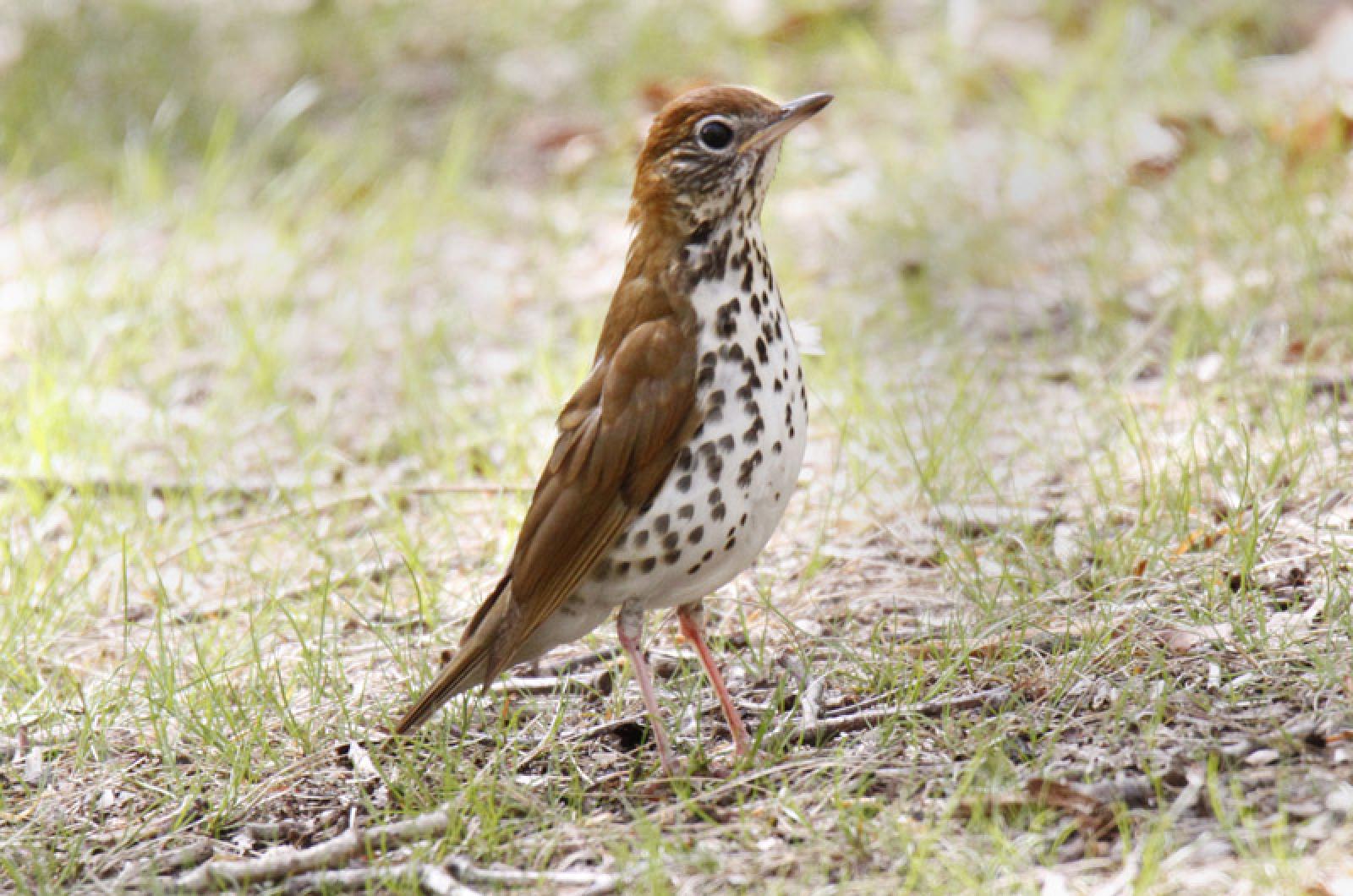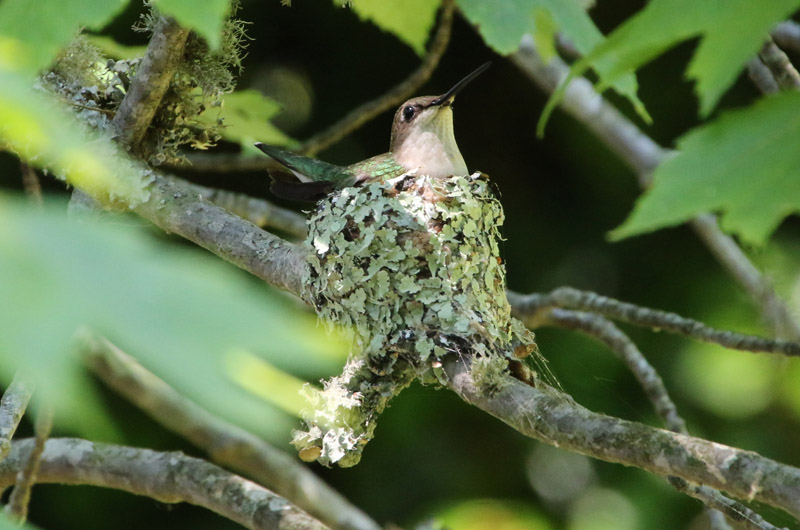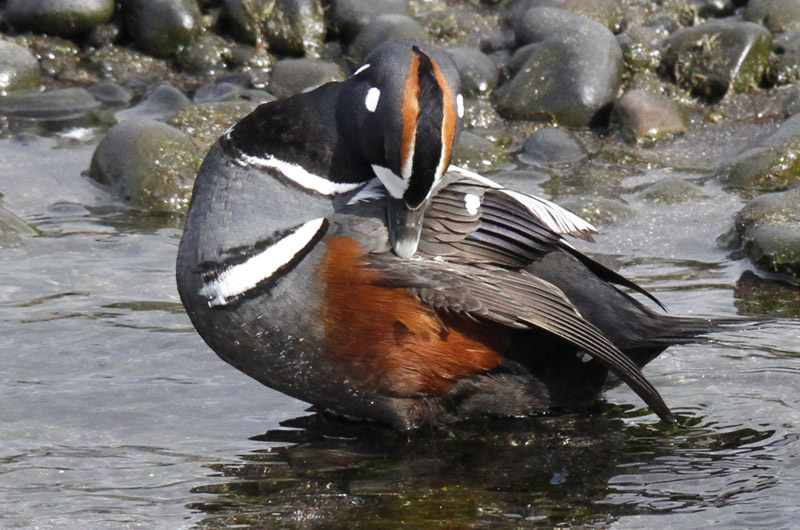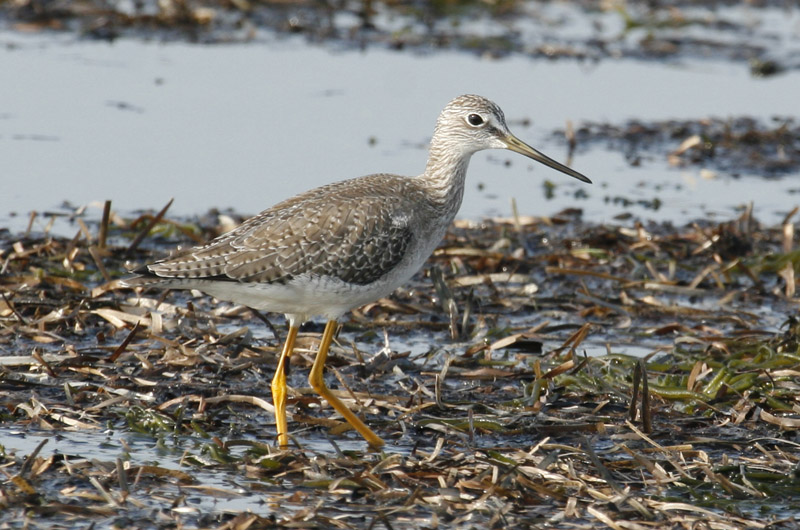A must-hear song is that of the wood thrush. It is most frequently described as an ethereal flute-like ee-oh-lay, but that is only the most characteristic part of its song, which is even more amazing when you realize that the final trill of the song is two notes sung simultaneously. Who else can sing two notes at the same time?
Wood thrushes are still abundant, with an estimated population of 11 million. However, their population has declined by 62 per cent since 1966, a decline of almost two per cent per year. The decline is especially pronounced in the New England states.
One of the most frequently cited causes for this decline is habitat fragmentation — chopping up their woodland habitat into smaller and smaller patches. This is occurring here on their breeding grounds and on their wintering grounds in southern Central America. Fragmented habitats tends have less high-quality food and the nests may be exposed to increased rates of predation by raccoons, jays, crows, cats and brown-headed cowbirds.
These thrushes raise two broods in a year. The male feeds the young from their first nest while the female starts a second nest. When the second brood hatches, each adult raises one of the broods in different parts of their territory.
Because of radio telemetry — putting tiny transmitters on the adults and using the signals to locate individual birds — we know that their breeding territories can be several acres in size and include mature trees more than 50 feet tall. Their territories also include areas with a moderately thick shrub understory and other areas with lots of bare moist soil and decaying leaf litter. They forage for food in the leaf litter.
An article published in an ornithological journal last fall added a new wrinkle to our knowledge. They used telemetry to locate the wood thrushes at night during the breeding season. When the pair was getting ready to nest, the males roost an average of 30 feet away from the female. But at night the females are incubating the eggs and the male’s roost site average 360 feet away from the female. Often, the males were even roosting in an adjacent territory.
Why? Often the males were roosting in more dense vegetation, which may provide better concealment from predators. Or, since I recall reading that fledgling thrushes are often taken to more dense vegetation, perhaps they are scouting out the best areas to take their young. There are lots of other potential explanations for this totally unexpected behavior, and it will take additional research before we can understand why the male wood thrushes do this.
Bird Sightings
Angelina Stancampiano found two lingering winter resident species, harlequin ducks and common eiders, as they perched on a rock off the Gay Head Cliffs on June 21.
On June 26, Flip Harrington, Soo Whiting and Sarah Mayhew circumnavigated Menemsha Pond in an unsuccessful search for another lingering winter resident, the razorbills reported a few weeks back. Instead they found 10 oystercatchers, two belted kingfishers, one green heron, two great egrets, plus common and least terns and a very unexpected surf scoter. They also cruised to southeast of Noman’s Land, where their highlights included Cory’s shearwaters and a common loon, another species that is not supposed to be here at this time of the year.
Warren Woessner and Soo Whiting visited Norton Point Beach on June 25 and found one greater yellowlegs and two laughing gulls; neither of these species nest on the Vineyard. Laughing gulls breed elsewhere in Massaachusetts, and probably will start breeding here soon, but all yellowlegs breed in Canada. What is the yellowlegs still doing here? After all, in a few weeks they will be arriving on their southward migration and after their breeding season. Less surprisingly, they also observed piping plovers, black skimmers and saltmarsh sparrows, each of which breeds here.
Chris Daly reports finding a woodcock walking through the leaf litter at Noman’s Watch Hill in Aquinnah on June 24.
On June 25, my guided birding tour visited Fulling Mill Brook, where our highlights were redstart, northern parula, ovenbird, and common yellowthroat, and two wood thrushes. We visited there partly because wood thrushes can reliably be found there, even when they are absent from several places where I normally find them.
Steve and Happy Spongberg reported a wood thrush at Waskosim’s Rock Reservation on June 26. It flitted from branch to branch ahead of them along the trail by the Mill Brook, allowing them good looks at it.
It is nesting season and the attention of many birders shifts to documenting nesting habits. Please be sure to report your sightings to birds@mvgazette.com.
Robert Culbert leads Saturday morning guided birding tours and is an ecological consultant living in Vineyard Haven.








Comments
Comment policy »